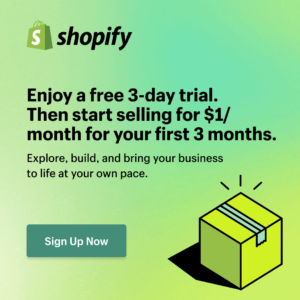Table of Contents Show
Owned media in digital marketing refers to the content and communication channels created and controlled directly by a business. The primary goal of owned media is to boost brand awareness organically without relying on paid advertising campaigns.
As Gupta emphasizes in Digital Marketing Strategy:
“Being on the first page of results makes it more likely for someone to click on your link—and being at the top of the first page increases the likelihood even more.”
To achieve this, businesses must focus on search engine optimization (SEO), strategically use high-value keywords in their content, and continuously enhance the user experience on their websites.
Kate Laliberte, the e-commerce director at OOFOS, shares a practical perspective in Digital Marketing Strategy:
“For us, owned media focuses on organic search, organic social, and email, but you can also expand it. Our website, blog posts we host there, and even some direct mail we’ve just started—that’s all owned media. We truly control those channels. We determine where it goes, who it targets, and the story we tell.”
Owned Media in Digital Marketing Examples
1. Email Marketing
This includes email lists that your company has collected, built, and manages. A common example is a company newsletter, which keeps subscribers informed about company news, product launches, promotions, and other relevant updates. Because you control the list and the content sent to it, email marketing is a clear example of owned media.
2. Website and Blog
Your company’s website and blog are quintessential examples of owned media. These platforms provide full control over the content you publish, whether it’s detailed company information, blog posts, or other materials. Websites can also drive visitors toward desired actions, such as making a purchase, signing up for a newsletter, or contacting the sales team.
It’s essential to distinguish between the platform and the content in content marketing. While platforms like websites and blogs are owned, the content can encompass both owned and earned aspects:
- Owned Content: Blog posts authored by your employees, product descriptions, and web copy.
- Earned Content: When other websites or publications link to your blog posts or mention your company, generating backlinks—highly valuable for SEO.
3. Social Media Posts (Owned Media) vs. Social Interactions (Earned Media)
Publishing content directly on your social media channels (e.g., Facebook, Instagram, or Twitter) is considered owned media because you control the message, timing, and target audience (to some extent, through targeting options).
However, user interactions with your posts often fall under earned media. Examples include:
- Shares: When users share your post on their profiles, extending your reach to new audiences.
- Comments: User comments foster discussions and increase engagement, enhancing post visibility.
- Retweets (on Twitter): Similar to shares, retweets amplify your message to a broader network.
- Mentions: When users mention your brand or account in their own posts.
The Relationship Between Owned Media and Earned Media
Owned Media in digital marketing not only influences purchasing behavior—78% of consumers are swayed by content on social media—but also plays a crucial role in generating earned media.
Customers trust earned media 88% more than owned media. Therefore, building quality content on owned channels is a critical foundation for attracting attention and creating viral effects.
Benefits of Owned Media
- Full Control: You dictate the content and campaigns.
- Extended Reach: Target audiences effectively with optimized content.
- Sustainability: Content remains available long-term on your platforms.
- Diverse Content Formats: Flexibility to publish various types of content.
- Cost-Effective: Use social platforms without additional costs.
Conclusion
In summary, owned media in digital marketing includes any content or channel that a business creates and fully controls. It allows businesses to shape their messages, define their target audience, and deliver consistent communication.
Building and optimizing owned media in digital marketing not only enhances brand recognition but also lays a solid foundation for amplifying the impact of paid media and earned media strategies.







